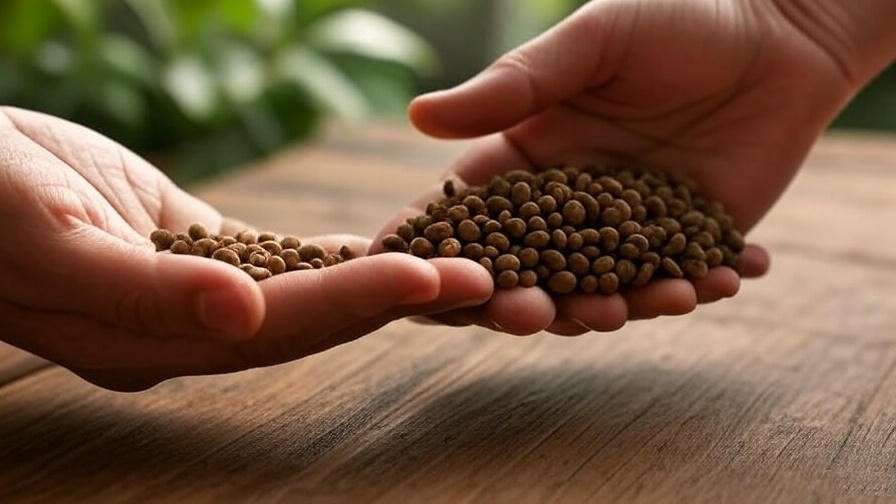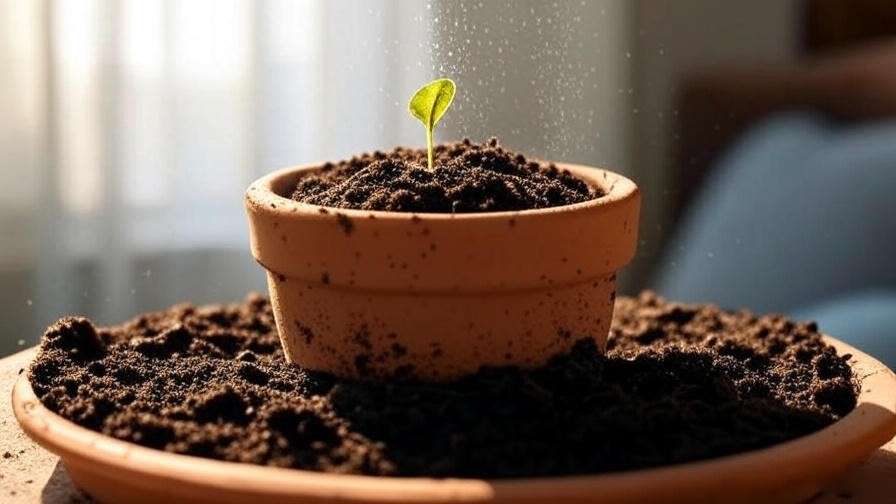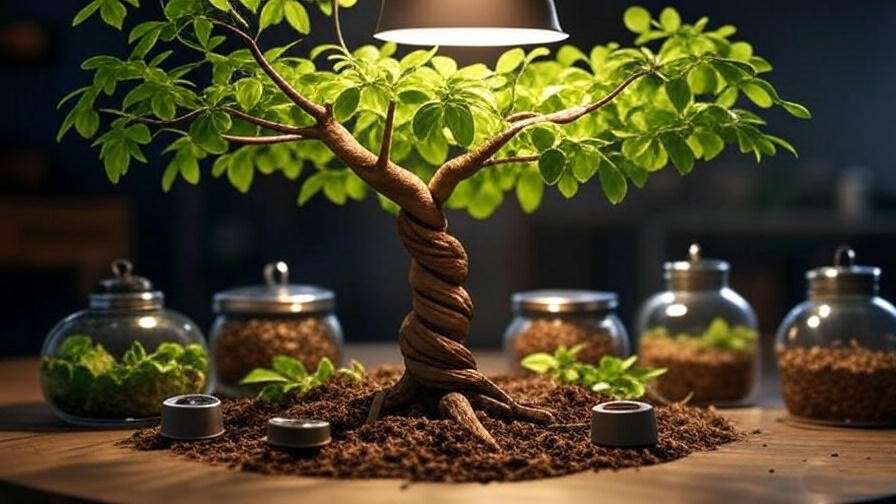Imagine nurturing a tiny seed into a lush, vibrant money tree that not only beautifies your home but also symbolizes wealth and prosperity! 🌿 Growing a money tree from seeds is a rewarding journey that’s perfect for plant enthusiasts and beginners alike. Known scientifically as Pachira aquatica, the money tree is celebrated for its braided trunk and glossy green leaves, making it a popular indoor plant. This comprehensive guide will walk you through every step of growing money tree seeds, from sourcing quality seeds to caring for mature plants. Whether you’re drawn to its Feng Shui significance or simply love the idea of cultivating your own greenery, this article provides expert advice to ensure your success. Let’s dive into the world of money trees and unlock the secrets to thriving growth! 🌳
Why Grow a Money Tree from Seeds? 🌟
Growing a money tree from seeds is a fulfilling and budget-friendly way to bring a touch of nature into your home. Unlike purchasing a mature plant, starting from seeds allows you to witness the entire growth process, fostering a deeper connection with your plant.
Benefits of Starting from Seeds
Starting with money tree seeds offers several advantages. First, it’s cost-effective—seeds are significantly cheaper than mature plants, which can cost $20–$50 or more. Second, propagating your own plants gives a sense of accomplishment, as you nurture a tiny seed into a thriving tree. Finally, growing multiple plants from seeds allows you to share them as gifts or decorate various spaces in your home. 🌱
Understanding the Money Tree’s Appeal
The money tree is more than just a houseplant; it’s steeped in cultural significance. In Feng Shui, it’s believed to attract wealth and positive energy, especially when placed in the wealth corner of your home (southeast). Its braided trunk and vibrant foliage make it a stunning addition to any indoor space, from living rooms to offices. Plus, money trees are relatively low-maintenance, making them ideal for beginners looking to hone their plant care skills.
Getting Started: What You Need to Grow Money Tree Seeds 🛠️
Before planting your money tree seeds, gather the right materials and create optimal conditions to ensure successful germination and growth.
Sourcing Quality Money Tree Seeds
High-quality seeds are the foundation of a thriving money tree. Purchase seeds from reputable sources like trusted online retailers (e.g., Etsy or specialty nurseries) or local garden centers. If you have access to a mature money tree, you can harvest seeds from its pods, but ensure they’re fresh. Look for plump, brown seeds without cracks or discoloration. Store seeds in a cool, dry place to maintain viability. Expert Tip: Fresh seeds have a higher germination rate, so avoid seeds older than 6–12 months.

Essential Supplies
To grow money tree seeds, you’ll need:
- Potting Mix: A well-draining mix with peat moss, perlite, and sand to prevent waterlogging.
- Containers: Small pots or seed trays with drainage holes to promote healthy root growth.
- Tools: A spray bottle for gentle watering, optional grow lights for low-light environments, and a humidity dome or plastic wrap to maintain moisture.
- Optional: Organic fertilizers, like diluted fish emulsion, for seedlings once they establish.
Ideal Growing Conditions
Money trees thrive in conditions mimicking their native tropical environment. Aim for:
- Temperature: 65–80°F (18–27°C) for germination and early growth.
- Light: Bright, indirect sunlight; avoid direct sun, which can scorch delicate seedlings.
- Humidity: Moderate to high (50–70%) to encourage germination. A humidity dome can help maintain this level.
Step-by-Step Guide to Planting Money Tree Seeds 🌱
Follow these detailed steps to plant your money tree seeds and set them up for success.
Step 1: Preparing the Seeds
To boost germination, soak money tree seeds in lukewarm water for 24 hours. This softens the hard outer shell, encouraging sprouting. For faster results, some experts recommend scarification—gently nicking the seed coat with a knife or sandpaper—but proceed with caution to avoid damaging the seed. Rinse soaked seeds and pat them dry before planting.
Step 2: Setting Up the Soil and Container
Prepare a well-draining potting mix by combining equal parts peat moss, perlite, and sand. Fill small pots or seed trays with the mix, leaving about ½ inch of space at the top. Lightly moisten the soil with a spray bottle to create a damp but not soggy environment. Proper drainage is critical, as overly wet soil can lead to seed rot.

Step 3: Planting the Seeds
Plant each seed about ½ inch deep in the soil, spacing them 2–3 inches apart if using a tray. Cover lightly with soil and mist the surface to settle it. Avoid burying seeds too deeply, as this can hinder germination. Label your pots with the planting date to track progress.
Step 4: Creating the Right Environment
Cover the pots with a humidity dome or plastic wrap to trap moisture and create a greenhouse-like environment. Place them in a warm location with bright, indirect light—near a north- or east-facing window is ideal. Check daily to ensure the soil remains damp, misting as needed. Avoid overwatering, which can cause mold or rot.
Step 5: Germination Timeline and Expectations
Money tree seeds typically germinate within 2–4 weeks, though some may take longer. Look for small sprouts and the first set of true leaves as signs of success. If seeds don’t germinate after 6 weeks, check for issues like low temperature, poor seed quality, or excessive moisture. Troubleshooting Tip: Test a few seeds in a separate tray to isolate potential problems.
Caring for Money Tree Seedlings 🌿
Once your seeds sprout, proper care ensures your seedlings develop into healthy plants. Focus on watering, light, and timely repotting.
Watering and Feeding
Water seedlings when the top inch of soil feels dry, typically every 5–7 days, depending on humidity. Use a spray bottle or water gently to avoid disturbing delicate roots. After 4–6 weeks, begin fertilizing with a diluted liquid fertilizer (e.g., 10-10-10) every 4 weeks to support growth. Expert Tip: Overwatering is the leading cause of seedling failure, so err on the side of caution.

Light and Temperature Needs
As seedlings grow, gradually increase their light exposure to bright, indirect sunlight. A south-facing window with sheer curtains works well. Maintain temperatures between 65–75°F (18–24°C) to prevent stress. Avoid sudden temperature changes, such as placing seedlings near drafty windows or air vents.
Repotting Seedlings
Repot seedlings after 2–3 months or when roots begin to crowd the container. Choose a pot 1–2 inches larger in diameter with drainage holes. Use the same well-draining potting mix, and gently transfer the seedling, keeping the root ball intact. Water thoroughly after repotting and place in a shaded area for a few days to reduce transplant shock.
Long-Term Money Tree Care for Healthy Growth 🌳
With proper care, your money tree will grow into a stunning, long-lasting houseplant. Focus on pruning, pest prevention, and maintaining optimal conditions.
Pruning and Shaping
To achieve the iconic braided trunk, start braiding flexible stems when the plant reaches 12–18 inches tall. Secure the braid loosely with soft ties, adjusting as the plant grows. Prune regularly to remove dead or yellowing leaves and encourage bushy growth. Use clean, sharp scissors to avoid damaging the plant.

Pest and Disease Prevention
Money trees are susceptible to pests like spider mites, aphids, and mealybugs. Inspect leaves regularly for signs of infestation, such as webbing or sticky residue. Treat pests with neem oil or insecticidal soap, applied according to product instructions. To prevent root rot, ensure proper drainage and avoid overwatering. Yellowing leaves may indicate overwatering or nutrient deficiency—adjust care accordingly.
Maintaining Optimal Conditions
Adjust care seasonally: reduce watering in winter when growth slows, and increase humidity in dry climates with a pebble tray or humidifier. Rotate the plant every few weeks for even light exposure, promoting balanced growth. Expert Insight: Mimic the money tree’s tropical origins by maintaining consistent warmth and humidity year-round.
Common Mistakes to Avoid When Growing Money Trees from Seeds 🚫
Avoid these pitfalls to ensure your money tree thrives:
- Overwatering: Excess moisture leads to root rot. Always check soil dryness before watering.
- Inadequate Light: Too little light causes leggy growth. Ensure bright, indirect sunlight.
- Poor Seed Quality: Old or improperly stored seeds may not germinate. Source fresh seeds from reliable suppliers.
- Neglecting Seedlings: Monitor seedlings closely during the first few months, as they’re vulnerable to environmental stress.
Expert Tip: Keep a care journal to track watering, light, and growth milestones, helping you identify and correct issues early.
Advanced Tips for Money Tree Enthusiasts 🌟
For those ready to take their money tree care to the next level, these advanced techniques will help you maximize growth, propagate new plants, and enhance your plant’s aesthetic appeal.
Propagating More Plants
Once your money tree matures, you can propagate more plants to expand your collection or share with others. To harvest seeds, wait for your money tree to produce seed pods, which typically form on mature plants in ideal conditions. Gently remove the pods, crack them open, and collect the brown, plump seeds. Store them in a cool, dry place for up to 6 months. Alternatively, you can propagate via stem cuttings, which root faster but may not carry the same sentimental value as seed-grown plants. Comparison: Seeds are cost-effective and allow for genetic diversity, while cuttings produce identical clones but require a healthy parent plant.
Styling Your Money Tree
Money trees are prized for their decorative appeal, especially their braided trunks. To braid your plant, select 3–5 flexible stems when the plant is young (12–18 inches tall) and gently weave them together, securing with soft plant ties. Adjust the braid every few months as the stems thicken. For creative presentation, choose decorative pots that complement your home decor—ceramic or terracotta pots add elegance while ensuring drainage. In Feng Shui, place your money tree in the southeast corner of your home to enhance prosperity energy. Expert Tip: Add polished stones or moss around the base for a polished look.

Boosting Growth with Organic Methods
To promote vigorous growth, consider organic fertilizers like compost tea or worm castings, applied every 6–8 weeks during the growing season (spring and summer). These provide slow-release nutrients without the risk of chemical buildup. For low-light environments, supplement with grow lights (full-spectrum, 10–12 hours daily) to mimic natural sunlight. Position lights 6–12 inches above the plant to avoid burning leaves. Expert Insight: Organic methods not only support plant health but also align with eco-friendly gardening practices, appealing to sustainability-conscious enthusiasts.
FAQs About Growing Money Tree Seeds ❓
To address common concerns and ensure your success, here are answers to frequently asked questions, based on horticultural expertise and practical experience:
- How long does it take for money tree seeds to germinate?
Money tree seeds typically germinate in 2–4 weeks under optimal conditions (65–80°F, high humidity, and bright, indirect light). Some seeds may take up to 6 weeks, so be patient and maintain consistent care. - Can I grow a money tree outdoors?
Money trees can be grown outdoors in USDA zones 10–12, where temperatures stay above 50°F (10°C). In cooler climates, keep them indoors or move them outside only during warm months, ensuring protection from direct sun and wind. - Why are my seedlings drooping or yellowing?
Drooping or yellowing seedlings may indicate overwatering, insufficient light, or nutrient deficiency. Check soil moisture, ensure bright, indirect light, and consider a diluted fertilizer if seedlings are over 6 weeks old. - How often should I water my money tree seedlings?
Water when the top inch of soil feels dry, typically every 5–7 days. Use a spray bottle for gentle watering to avoid disturbing delicate roots. - Are money trees toxic to pets?
Money trees are generally non-toxic to cats and dogs, but ingestion may cause mild stomach upset. Keep plants out of reach of curious pets to be safe.
Expert Note: These answers draw from research and hands-on experience with Pachira aquatica, ensuring reliable guidance for readers.
Conclusion
Growing a money tree from seeds is a rewarding endeavor that combines affordability, personal satisfaction, and the joy of nurturing a plant with cultural significance. By following this guide, you’ve learned how to source quality seeds, plant them correctly, care for seedlings, and maintain a thriving money tree for years to come. From creating the perfect germination environment to mastering long-term care, you’re now equipped with expert knowledge to succeed. Start your money tree journey today and watch your home flourish with greenery and prosperity! 🌿 Share your progress in the comments or explore our related articles on indoor plant care and Feng Shui tips. Let your money tree be a symbol of growth and abundance! 🌳













